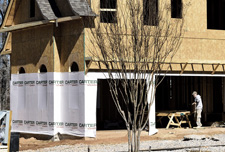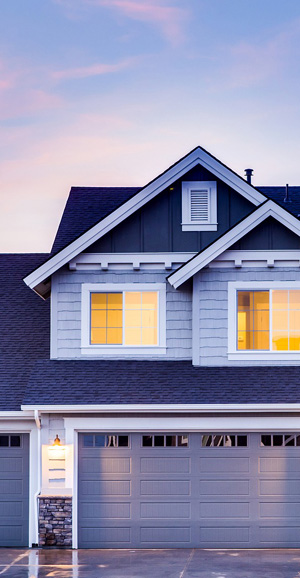News & Insights
 The energy lost through a building’s roof, walls, and windows is the largest single waste of energy in most homes, especially during hot summer and cold winter months. Therefore, the energy efficiency of a home is impacted by the materials that help create its envelope. With the recent LEED® minimum energy update, builders are paying more attention to how “tight” they can make the building envelope to keep energy usage and costs down. The results are impressive: the use of energy-saving technologies and products for building envelopes help save enough energy each year to power, cool and heat up to 56 million households, or run up to 135 million vehicles each year.
The energy lost through a building’s roof, walls, and windows is the largest single waste of energy in most homes, especially during hot summer and cold winter months. Therefore, the energy efficiency of a home is impacted by the materials that help create its envelope. With the recent LEED® minimum energy update, builders are paying more attention to how “tight” they can make the building envelope to keep energy usage and costs down. The results are impressive: the use of energy-saving technologies and products for building envelopes help save enough energy each year to power, cool and heat up to 56 million households, or run up to 135 million vehicles each year.
Weather-Resistant Barriers
Weather-resistive barriers are a part of exterior wall systems that protect building materials from exterior water penetration. They perform like a shell for buildings—liquid water that has penetrated the exterior finish does not pass through, yet water vapor can escape. By keeping building materials dry, a weather-resistive barrier improves building durability, decreases maintenance costs, and reduces the risk of moisture-related problems such as bugs, mold, mildew, and rot. Some weather-resistive barriers also reduce air infiltration, cutting utility costs and increasing comfort.
Weather Resistive Barriers Technology Fact Sheet PDF from the Office of Building Technology, state and community programs, energy efficiency and renewable energy, U.S. Department of Energy
Trends: Housing for the Millenium
The National Association of Home Builders, in its report “Housing at the Millennium” examined the trends in the home building industry. They predict, based on consumer preferences and emerging trends, that home buyers in the second decade of the 21st century will find that the average new home has:
- Universal design features to allow aging in place.
- More flexible and adaptable interior designs with spaces that can be converted for a variety of purposes, including home office space.
- More factory-built components which will reduce on-site labor costs.
- More engineered wood products.
- An increased use of steel and concrete.
- Materials and products that require less maintenance.
- Neighborhoods with smaller lots, narrower streets and less paved area.
- More mixed-use communities and neo-traditional designs.
This section is under construction, please check back- thank you!


